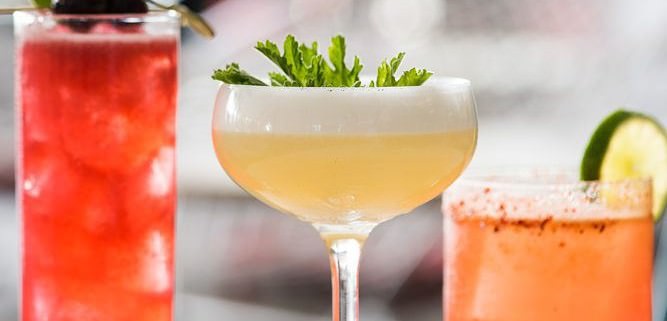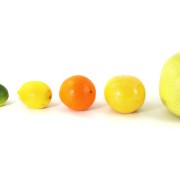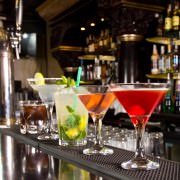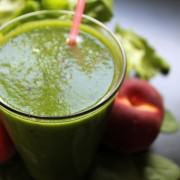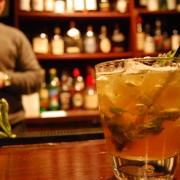How Your Restaurant Can Create Innovative Cocktails
Cocktail bars have reinvigorated drinker’s imaginations over the past decade. They’re the lifeline that has pulled cocktails from the depths of saccharine swamps filled with frozen daiquiris and sugar-rimmed cosmos. While these bars have certainly been innovative hubs of creativity, they’re most notable achievement, on a whole, has been as revivalists. While cocktail bars often look to the past for inspiration, one cocktail trend is set in the present. Culinary cocktails celebrate the philosophy of the kitchen. In today’s dining world, that means locally sourced ingredients with fresh flavors that reflect the seasons. Though exciting and inventive, culinary cocktails haven’t made as big a splash as some other beverage trends. More so, they’ve been a ripple: subtle but widespread. If you’re a restaurant thinking of revamping your cocktail program, you should look to the kitchen for inspiration.
Cocktail Bars Look to the Past for Inspiration
Cocktail bars are often staffed with history nerds who find the devil amidst the details. They comb through old recipe books and read histories of great barmen from the past, adopting old techniques and breathing life back into forgotten liquors. They’ve taken classics and updated them, turned them on their heads, and held a mirror to a past when a cocktail was meant to cure last night’s hangover. The aesthetic of hip cocktail bars is often that of the so-called speakeasy, with low-light interrupting shadows on dark wood. Whatever twist on that formula there is, the bars are meant to teleport you from the here-and-now to the by-gone and better days. Tiki bars are the most recent cocktail theme to gain acclaim, and tiki might actually be the archetype form of bar teleportation. Speakeasy themes and tiki kitsch operate in the same mode of escapist drinking. It’s not drinking to forget, it’s drinking to leave – only to return once the drink is done.
The Future of Cocktails May be in the Kitchen
Culinary cocktails incorporate herbs, fruits, vegetables, and take their cue not from old recipes, but from the culinary trends chefs have embraced. Restaurants that have a focus on fresh, locally sourced food can take those same values and apply them to their bar program (with delicious results). Some of these cocktails are the most innovative and compelling drinks being served today. They might simply incorporate fresh ingredients, or utilize expensive and impressive kitchen gadgetry, like vacuum sealed infusions. The access to a fully functioning kitchen gives restaurants an advantage over bars when it comes to storage space, appliances, and access to more ingredients. Restaurants should like to embrace this dynamic of their business.
Culinary cocktails have been on the scene for a few years now. The NRA has had them pegged as a beverage trend since 2009. They are still listed as a trend in this years NRA beverage trend forecast. This speaks to the staying power of these drinks. They certainly haven’t jumped-the-shark yet. And as the restaurant landscape continues to evolve, we might see more and more places creating culinary cocktails.
How Will Culinary Cocktails Push Forward
Riley Huddleston is the Executive Chef and Beverage Manager at the soon-to-open London House in Chicago. Previously, he was the executive chef at the Godfrey Hotel Chicago and had a short stint at the Aviary. All of these bar programs have take their cue from the kitchen. His title at London House, Executive Chef and Beverage Manager, sums up the new identity of chefs impacting a restaurant outside of the kitchen. For Chef Huddleston, a culinary cocktail is a simple idea, “it’s when the techniques and philosophy used by the chef in the kitchen is applied to the bar.”
He believes there is a bright future for chef-designed cocktails. “I think more restaurants will embrace culinary cocktails as chefs start to oversee more of the overall operations of a restaurant. When a chef is developing cocktails with the kitchen in mind, there becomes more cohesion between the entire restaurant. Flavors are balanced, and guests overall experience is connected.”
In the end though, whether you’re serving an old-fashion or a citrus-infused drink with an elderflower foam, the end-goal is the same.
“You just want the guest to enjoy it.”
- 5 Fall Cocktails to Capture the Flavors of Autumn - September 26, 2018
- How Restaurants Can Ignore Sales and Increase Profits - May 9, 2018
- 2018 Spring Wine Trends - April 18, 2018

